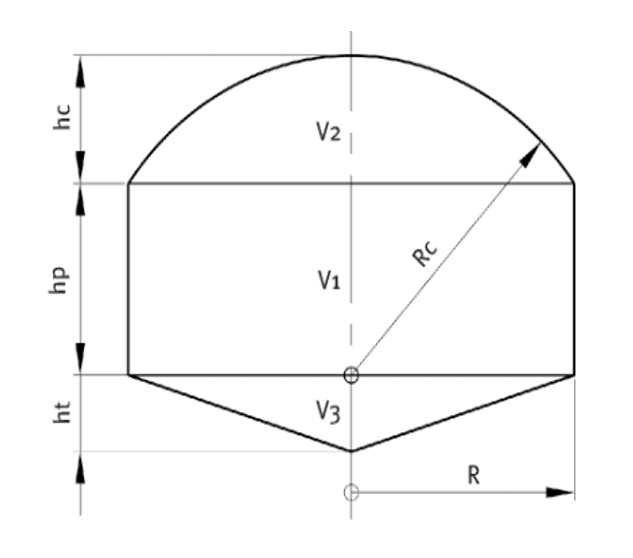Determination of Appropriate Anaerobia the Technology of Biodigestion for a System of Poultry Production
Main Article Content
Abstract
This research is aimed to determine the anaerobic bio-digestion technology suitable for a poultry production system, established at the “El Guayabal” University Farm, belonging to the Agrarian University of Havana considering economic, environmental and energy feasibility. To do this, the animal species existing (Leghorn chickens, white-breasted turkeys and free-range chickens) in the scenario are determined, given that these species will contribute sizing the organic waste to the biodigester, the number of animals is also determined, considering the herd movement, which would make it possible to determine the biomass generated daily for the purpose of establish the of the appropriate biodigester technology and know the behavior of the economic and energy parameters. Among the main results obtained, it was evident that the installation of a tubular polyethylene biodigester is more feasible than the installation of a fixed dome biodigester, meaning an economic saving of 21 418.1 peso due to technology selection; the necessary volume of this technology must be 22 m3, making it possible to produce 11.6 kg/day of biofertilizers, which represents a daily economic contribution of 145 peso/day (5.8 USD/day), constituting an added value, in addition to the energy and economic benefits to be obtained. Furthermore, with the introduction of the selected anaerobic bio-digestion technology it is possible to generate electrical energy for lighting, heating and the extraction of humid air, which requires the acquisition of a 2 kW biogas generator.
Article Details

This work is licensed under a Creative Commons Attribution-NonCommercial 4.0 International License.
Those authors that have publications with this journal accept the following terms:
1. They will retain their copyright and guarantee the journal the right of first publication of their work, which will be simultaneously subject to the License Creative Commons Attribution-NonCommercial 4.0 International (CC BY-NC 4.0) that allows third parties to share the work whenever its author is indicated and its first publication this journal. Under this license the author will be free of:
• Share — copy and redistribute the material in any medium or format
• Adapt — remix, transform, and build upon the material
• The licensor cannot revoke these freedoms as long as you follow the license terms.
Under the following terms:
• Attribution — You must give appropriate credit, provide a link to the license, and indicate if changes were made. You may do so in any reasonable manner, but not in any way that suggests the licensor endorses you or your use.
• NonCommercial — You may not use the material for commercial purposes.
• No additional restrictions — You may not apply legal terms or technological measures that legally restrict others from doing anything the license permits.
2. The authors may adopt other non-exclusive license agreements to distribute the published version of the work (e.g., deposit it in an institutional telematics file or publish it in a monographic volume) whenever the initial publication is indicated in this journal.
3. The authors are allowed and recommended disseminating their work through the Internet (e.g. in institutional telematics archives or on their website) before and during the submission process, which can produce interesting exchanges and increase the citations of the published work. (See the Effect of open access).
References
CADENA AVÍCOLA: Implementación de energías renovables en granjas avícolas: una solución sostenible y económica. Cadena Avícola y Porcina, [en línea], Cadena Avícola, 2023, Disponible en: https://cadenaavicola.com/implementacion-de-energias-renovables-en-granjas-avicolas-una-solucion-sostenible-y-economica/.
FLOTATS, X.; CAMPOS, E.; PALATSI, J.; BONMATÍ, X.: “Digestión anaerobia de purines de cerdo y codigestión con residuosde la industria alimentaria”, Porci; Monografías de actualidad, 65: 51-65, 2001.
FRANKIEWICZ, T.: People’s Republic of China Urban Municipal Waste and Wastewater Program, [en línea], Inst. Technology, Process and Evaluation Best Practices for Utilizing Organic and “Kitchen” Waste from the Municipal Solid Waste Stream” Workshop. Global Methane Initiative, Ningbo, China, 16 p., 2015, Disponible en: http://communitybysesign.co.uk/.2015.
GRUNDEY, K.: El tratamiento de los residuos agrícolas y ganaderos, Ed. Ediciones GEA Barcelona, Ediciones GEA ed., Barcelona, España, 278-280 p., 1982.
GUARDADO, C.J.A.: Manual del Biogás, Ed. Editorial Cubasolar, La Habana, Cuba, 2006.
GUARDADO, C.J.A.: Diseño y construcción de plantas de biogás sencillas, Ed. Editorial Cubasolar, La Habana, Cuba, 2007.
HERNÁNDEZ, J.; PÉREZ, J.; BOSCH, I.; CASTRO, S.: Clasificación de los suelos de Cuba 2015, Ed. Ediciones INCA, San José de las Lajas, Mayabeque, Cuba, 93 p., 2015, ISBN: 978-959-7023-77-7.
MOREJÓN, M.Y.; TORRICO, A.J.C.; MORENO, M.V.; ABRIL, H.D.A.: Fundamentos para la introducción de las fuentes de energía renovables en sistemas agropecuarios. Caso de estudio: Introducción de biodigestores en fincas pertenecientes al departamento Cundinamarca, Colombia, Depósito Legal: 4-1-4299-2022, Publicado en: La Paz-Bolivia, por el Instituto Agrario Bolivia, con el sello editorial CienciAgro, 2022, ISBN: 978-9917-9928-0-6.
PARRA, D.; BOTERO, M.; BOTERO, J.: “Biomasa residual pecuaria: revisión sobre la digestión anaerobia como método de producción de energía y otros subproductos”, Revista UIS Ingeniería, 18(1): 149-160, 2019.
PRIDDLE, R.: “Energía y Desarrollo Sostenible”, En: Conferencia Nacional Italiana sobre la Energía y el Medio Ambiente, noviembre de 1998, Italia, 1998.
RAHAYU, A.S.; KARSIWULAN, D.; YUWON, H.; TRISNAWA, I.; MULYASAR, S.; RAHARDJO, S.: Handbook Pome-to-Biogas. Project development in Indonesia. Jakarta, Ed. Winrock International, Jakarta, Indonesia, 2015.
SANTOS, A.I.; MEDINA, M.N.; MACHADO, M.Y.; MARTÍN, S.T.M.: La Educación Agropecuaria en la Escuela cubana actual, Ed. Editorial “Félix Valera Morales, Centro de Estudio de la Educación Ambiental. Villa Clara, Cuba, 2011.
SOSA, R.: “Indicadores ambientales de la producción porcina y ganadera”, En: VII Seminario Internacional de Porcicultura Tropical. La Habana: Instituto de Investigaciones Porcinas 2017, La Habana, Cuba, 2017.
SUÁREZ, J.; SOSA, R.; MARTINEZ, Y.; CURBELO, A.; FIGUEREDO, T.; CEPERO, L.: “Evaluación del potencial de producción del biogás en Cuba”, Pastos y Forrajes, 41(2): 85-92, 2018, ISSN: 0864-0394, versión On-line ISSN 2078-8452.
ZHENG, Y.H.; WEI, J.G.; LI, F.S.F.; JIANG, G.M.; LUCAS, M.; WU, M.; NING, T.Y.: “Anaerobic fermentation technology increases biomass energy use efficiency in crop residue utilization and biogas production”, Renewable and Sustainable Energy Reviews, 16(7): 4588-4596, 2012, DOI: https://doi.org/10.1016/j.rser.2012.03.061.201.
